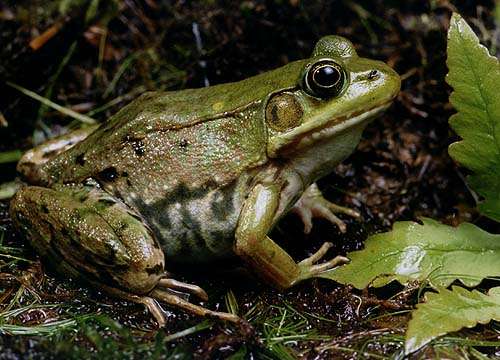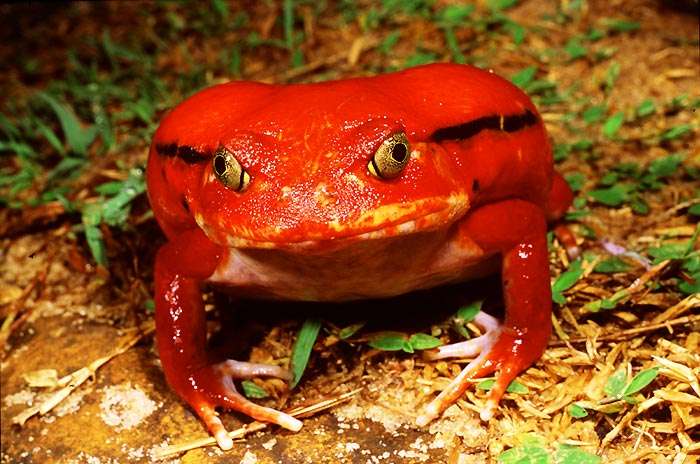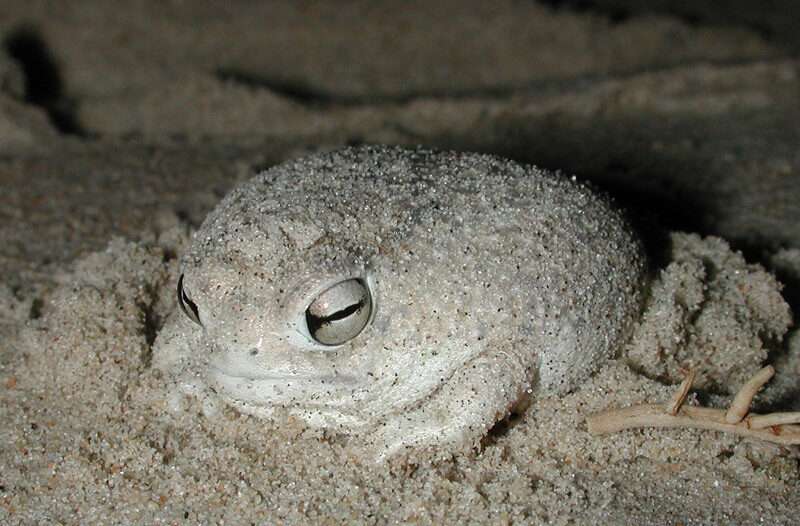
The green frog, often referred to as Lithobates clamitans or Rana clamitans, is a species of amphibian that is indigenous to eastern North America. The bronze frog and the northern green frog are the two subspecies. According to their name, these frogs often have green heads in varying degrees. These frogs exhibit strong territorial behavior, with males being the main perpetrators. Male green frogs to ward off rival males as well as other intruders who could be enticed to approach their territory use this defense mechanism. Territoriality is important in mating because females prefer males who are dominant in their territory and make loud mating calls. Male green frogs to entice possible mates use four different forms of breeding calls. The eggs of green frogs are preyed upon by insects like beetles, water bugs, and water scorpions. Various species of birds often pose a threat to adult frogs.
Habitat
Only the Nearctic region is home to a species of green frog known as Lithotates clamitans. They can be found in both the United States and Canada, starting in Maine and the Maritime Provinces of Canada and reaching up the entire east coast of the United States. A wide range of habitats, including swamps, ponds, lakes, , forested swamps, bogs, marshes, the banks of slow-moving oxbow lakes, rivers, streams, sloughs, and impoundments, are home to green frogs. When it rains, juveniles may scatter into forests or meadows. Most of the time, green frogs spend the winter submerged in water.
Appearance
Green, greenish brown, brownish, yellowish green, and olive are just a few of the colours that green frogs can be. Occasionally, they could even be blue. Typically, they have more sporadic, smaller black flecks towards the front where it is brighter. Transverse dark streaks go down their legs. They are white or yellowish below, with the males usually having a dazzling yellow neck. The tympanum (eardrum), which is large, is typically about the same size as the eye in women and much larger in men. It is easy to see the dorso-lateral ridge, which extends from the back of the eye posteriorly along the body. The toes are well webbed, and the initial fingers don’t go past the second finger. This translates to 12.5 cm for the femur and 7.5 to 12.5 cm for the tibia in adults.

Reproduction
The suitability of their territories for egg laying influences how the female green frogs choose their mates. While green frogs are reproducing, satellite males could also be present. A satellite male is a tiny male that is frequently observed in areas that are guarded by a larger male and is incapable of acquiring and defending territories. The smaller, less dominating satellite male will watch for an opportunity to mate with a female that is responding to his vocalizations.
Breeding occurs in the late spring, though actual breeding seasons can vary depending on area and temperature. A range of habitats, including swamps, ponds, marshes, bogs, and slow-moving streams, are used during the breeding season, which lasts between one and three months. Amplexus starts after a female selects a guy. 1000 to 7000 eggs may be deposited during amplexus. The egg masses hang from emerging aquatic vegetation or float on the water’s surface. Wells (1976) demonstrated that multiple egg clutches are feasible; the second egg clutch, which typically contains 1000 to 1500 eggs, is smaller. In 3 to 7 days, eggs hatch, and they take 3 to 22 months to reach the tadpole stage of growth.
Keeping as Pet
Lithobates clamitans, or green frogs, make excellent pets. Even adults that have been trapped in the wild can quickly calm down and be hand-fed. This stands in stark contrast to a number of native American frogs, such as American bullfrogs, leopard frogs, and pickerel frogs, which can remain tense and challenging to observe, even after years in captivity.
Diet
As predominantly carnivorous creatures, green frogs consume a wide range of insects and other invertebrates from both the water and the land, including slugs, snails, crayfish, spiders, flies, caterpillars, butterflies, and moths. Additionally, they consume other animals like little snakes and frogs. Green frogs engage in “sit and wait” hunting, feeding on anything that comes to hand. Tadpoles eat primarily diatoms, algae, and very minor amounts of zooplankton (copepods and cladocerans).
Table





